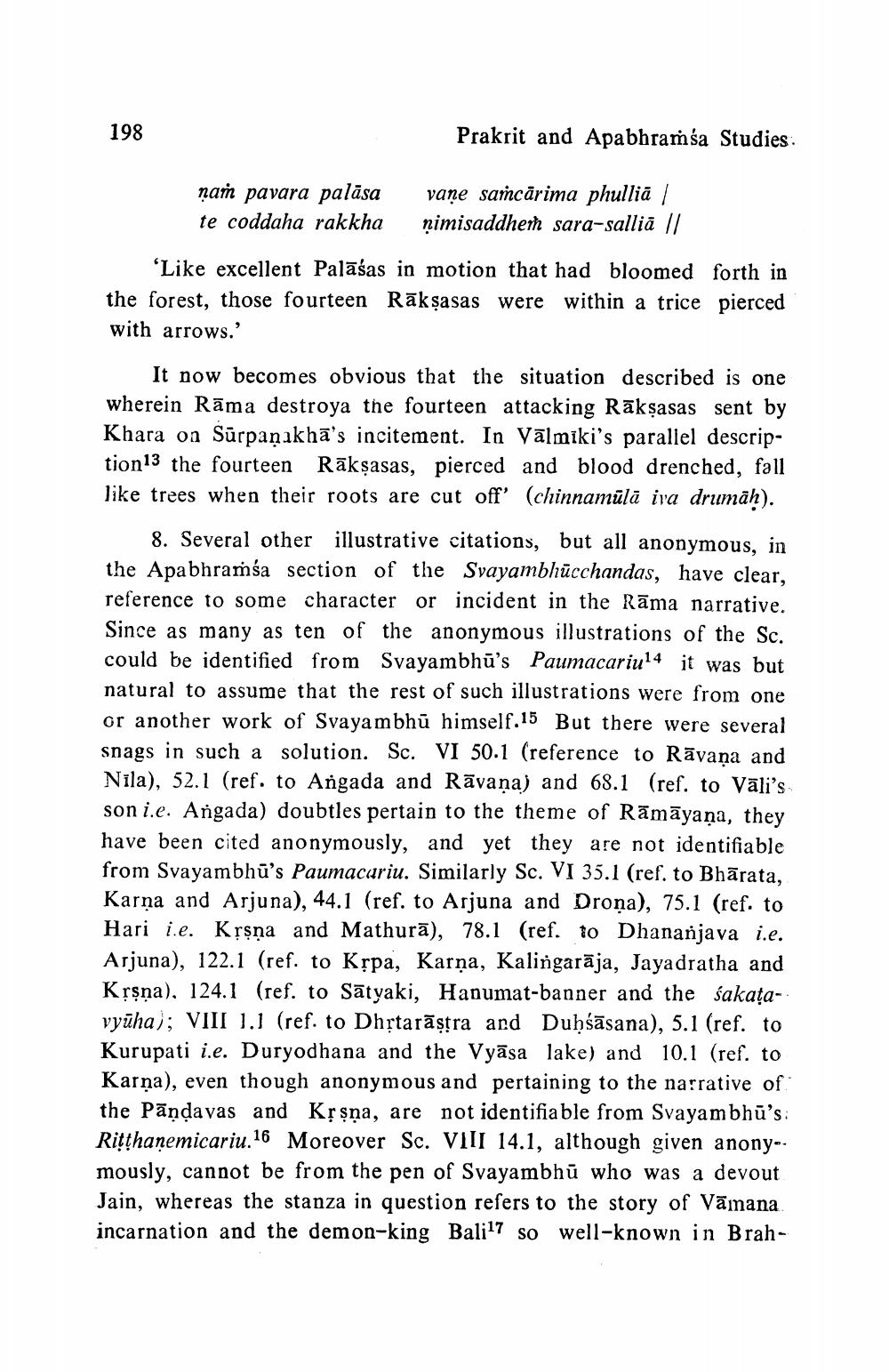________________
198
Prakrit and Apabhramśa Studies
ņai pavara palāsa te coddaha rakkha
vane samcārima phullia / nimisaddhem sara-sallia //
‘Like excellent Palāšas in motion that had bloomed forth in the forest, those fourteen Rākşasas were within a trice pierced with arrows.'
It now becomes obvious that the situation described is one wherein Rāma destroya the fourteen attacking Rākşasas sent by Khara on Sūrpanakhā's incitement. In Vālmiki's parallel description13 the fourteen Rākşasas, pierced and blood drenched, fall like trees when their roots are cut off' (chinnamülā iva drumäh).
8. Several other illustrative citations, but all anonymous, in the Apabhramśa section of the Svayambhūcchandas, have clear, reference to some character or incident in the Rāma narrative. Since as many as ten of the anonymous illustrations of the Sc. could be identified from Svayambhū’s Paumacariul4 it was but natural to assume that the rest of such illustrations were from one or another work of Svayambhū himself.15 But there were several snags in such a solution. Sc. VI 50.1 (reference to Rāvana and Nila), 52.1 (ref. to Angada and Rāvana) and 68.1 (ref. to Vāli's son i.e. Angada) doubtles pertain to the theme of Rāmāyaṇa, they have been cited anonymously, and yet they are not identifiable from Svayambhū's Paumacariu. Similarly Sc. VI 35.1 (ref. to Bhārata, Karņa and Arjuna), 44.1 (ref. to Arjuna and Droņa), 75.1 (ref. to Hari i.e. Krsna and Mathurā), 78.1 (ref. to Dhananjava i.e. Arjuna), 122.1 (ref. to Kệpa, Karņa, Kalingarāja, Jayadratha and Krsna), 124.1 (ref. to Sātyaki, Hanumat-banner and the sakațavyūha); VIII 1.1 (ref. to Dhịtarāṣtra and Duhśāsana), 5.1 (ref. to Kurupati i.e. Duryodhana and the Vyāsa lake) and 10.1 (ref Karņa), even though anonymous and pertaining to the narrative of the Pāndavas and Krşņa, are not identifiable from Svayambhū's: Ritthaņemicariu.16 Moreover Sc. VIII 14.1, although given anony-- mously, cannot be from the pen of Svayambhū who was a devout Jain, whereas the stanza in question refers to the story of Vāmana. incarnation and the demon-king Bali17 so well-known in Brah




